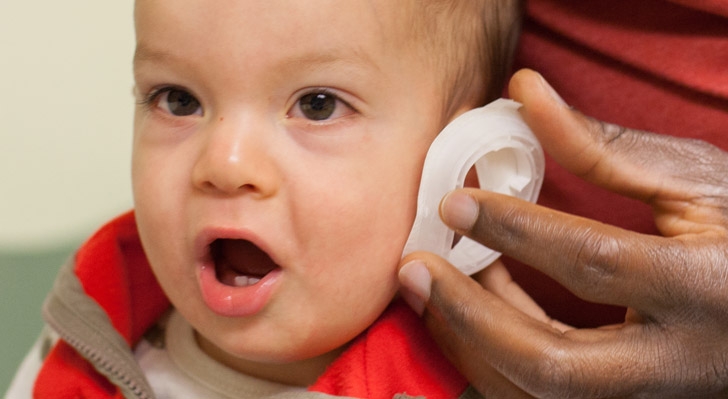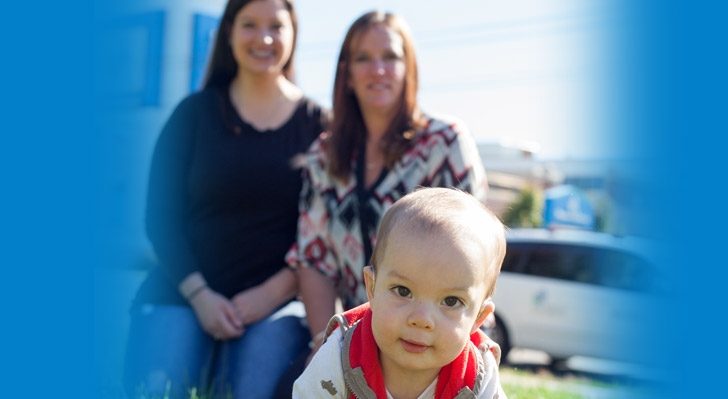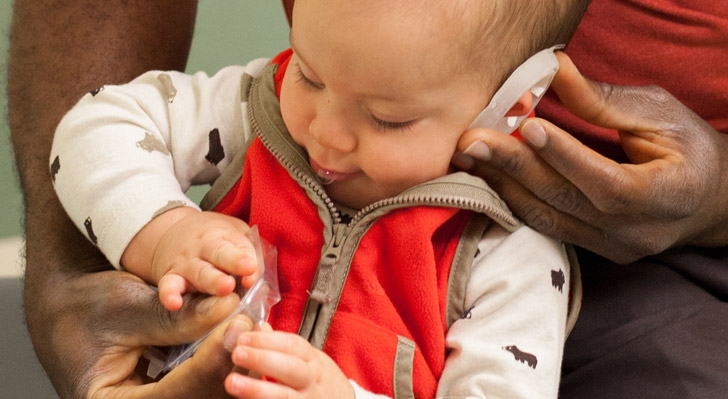Dec 19, 2013
patient story
Liam Back
non-surgical technique corrects a common deformity
When Liam Back was born just nine months ago, he was born with a very common deformity. His ears were “floppy.” Infant ear deformities occur at a rate of between 20 percent and 35 percent of all births, making it one of the most common abnormalities.
Mellisa, Liam’s grandmother wasn’t surprised. Ear and hearing problems are common in their family. Mellisa was born with floppy ears, and Liam’s mother, Brooke, lost her hearing at age 2.
Mellisa started taping Liam’s ears back with the hope that they would self-correct until she learned about a non-surgical approach, called the EarWell System™, performed by Salim Mancho, DO, plastic surgeon at Dayton Children’s.
“Some people believe that floppy outer ears are a minor aesthetic irregularity that will self-correct as the child grows,” explains Dr. Mancho. “However, adopting a ‘wait-and-see approach’ with the hope that the ears might self-correct is risky because that’s not always the case.”
The EarWell is a plastic device applied to the child’s ears within days after birth. It’s worn for four to six weeks and essentially reshapes ears that are “floppy.”
“EarWells require no anesthesia, sedation or medication because they cause no pain,” Dr. Mancho explains. “The success rate is 90 percent, leaving the child with beautiful, normal-shaped ears.”
According to Mellisa, Liam’s ears now have the same shape as other babies his age. His ears only look different because he wears hearing aids; Liam is moderately deaf, like his mother.
“We didn’t want Liam to have to go through the pain of getting teased for having floppy ears when he’s older,” Mellisa shares. “We are thrilled with the results. Now we don’t have to concentrate on what his ears look like, but on helping him hear the world.”




